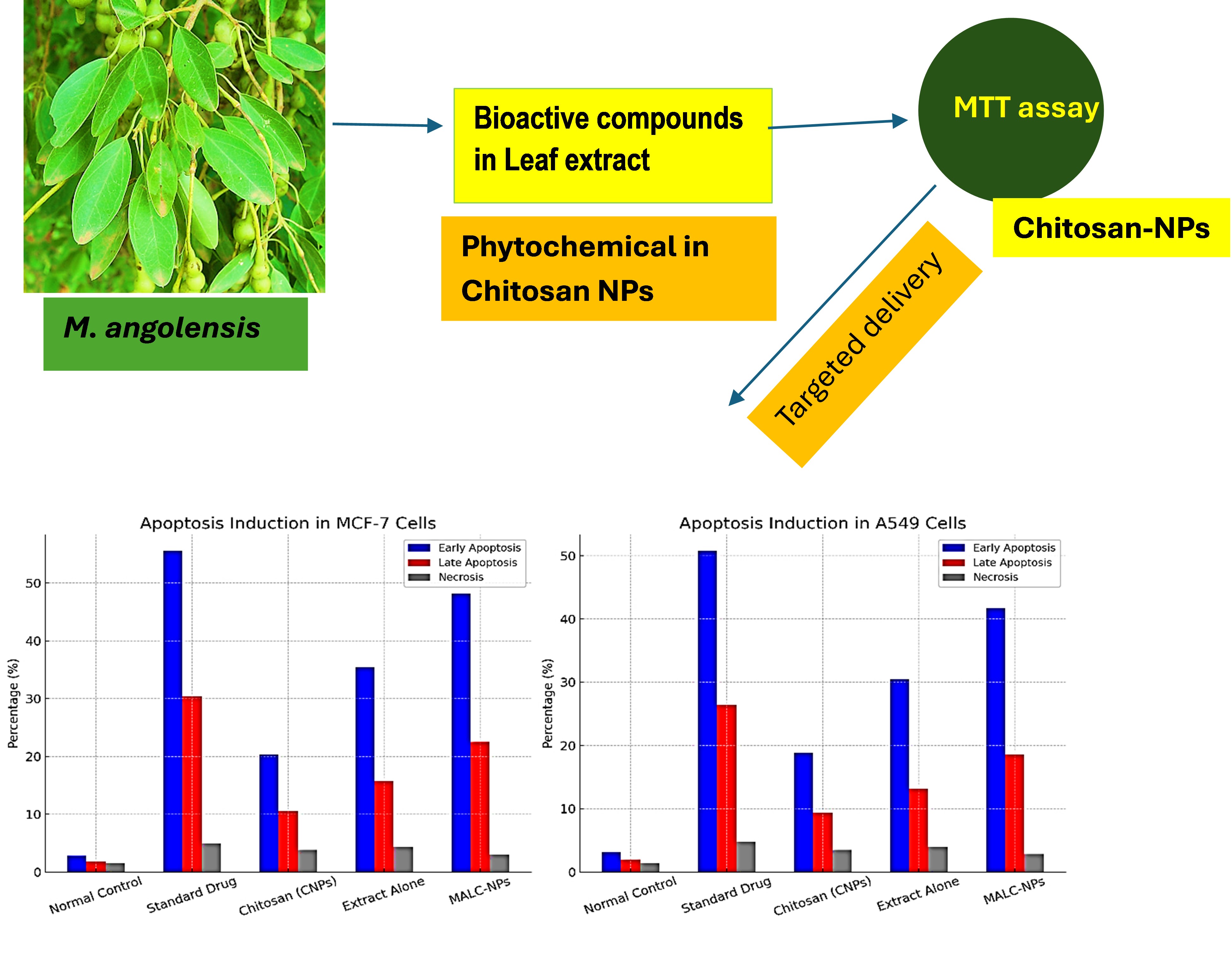Published: 15 Aug 2025
Evaluation of Anti-Inflammatory and Anticancer Activities of Maerua angolensis DC. Leaf Extract-Loaded Chitosan Nanoparticles
Volume 2

Published: 15 Aug 2025
Volume 2

Published: 24 Jun 2025
Volume 2
Bladder cancer remains a major global health challenge due to its high incidence, recurrence rates, and reliance on invasive diagnostic procedures. While conventional methods, such as cystoscopy and urine cytology, are considered standard, they often demonstrate limited sensitivity, particularly in detecting early-stage disease. Epigenetic alterations, particularly DNA methylation, are now recognized as critical in bladder cancer development and progression. Non-invasive urine-based DNA methylation assays have emerged as promising diagnostic and..
Published: 26 May 2025
Volume 1
The therapeutic potential of biomacromolecules in treating various diseases is undeniable; however, their application is significantly limited by the inherent barrier function of the cell membrane. Cell-penetrating peptides (CPPs), a class of small peptides comprising fewer than 30 amino acids, have garnered considerable attention due to their exceptional ability to traverse cell membranes. These peptides ease the intracellular delivery of various macromolecules, such as proteins, polypeptides, and nucleic acids, thereby..
Published: 28 Apr 2025
Volume 1
Cancer cells sustain rapid growth by reprogramming their metabolism to depend heavily on glycolysis, enhanced insulin signaling, and adaptive changes in the unfolded protein response (UPR). Insulin Potentiation Therapy (IPT) enhances the efficacy of chemotherapy by increasing insulin receptor expression, thereby improving the uptake of chemotherapeutic agents. Meanwhile, targeting endoplasmic reticulum (ER) stress disrupts the protein-folding machinery within cancer cells, steering them toward apoptosis. However, IPT faces several limitations, including..
Published: 15 Apr 2025
Volume 1

Published: 21 Apr 2025
Volume 2
Background: Oxidative stress plays a crucial role in various aspects of cancer and other diseases. While reactive oxygen species (ROS) serve as key signal molecules in physiological processes for the normal functioning of the female reproductive system, they have also been implicated in pathological processes such as polycystic ovary syndrome (PCOS). Some studies have reported a significantly higher risk of endometrial cancer in women with PCOS. However, the association of..
Published: 20 Mar 2025
Volume 2

Published: 19 Mar 2025
Volume 1
Lung cancer is the major cause of mortality worldwide with non-small cell lung cancer (NSCLC) contributing to 85% of the cases. FDA-approved immune checkpoint inhibitors (ICI), anti-PD-1, and anti-PD-L1 are widely used as a standard treatment. However, the response rate is limited and is observed in only 20–40% of the patients. Therefore, predictive and prognostic biomarkers are needed to help differentiate responders from non-responders, enabling a better understanding of disease..
Published: 11 Feb 2025
Volume 1
This review explores the progression of CRISPR-Cas9 genome editing technology in gene therapy for acute myeloid leukemia. Acute Myeloid Leukemia, a serious blood cancer, presents formidable treatment obstacles and a dismal prognosis. Effective treatments for acute myeloid leukemia rely on a clear understanding of its intricate genetic mechanisms, and CRISPR-Cas9 technology offers precision and adaptability for targeting the disease’s oncogenic drivers. The dual intron-targeting method of CRISPR-Cas9 is showcased in..
Published: 21 Oct 2024
Volume 1

Published: 12 Dec 2024
Volume 2
Accurate determination of prognostic risk is critical for patients and treating clinicians. The French-American-British classification of myelodysplastic syndromes (MDS) described refractory anemia with excess blasts (RAEB) in transformation (RAEB-T), including two subsets with <20% bone marrow (BM) blasts, which were reclassified as RAEB-2, the highest-risk MDS category in the 2001 World Health Organization classification. Those diagnostic criteria have been retained until now with nomenclature changes from RAEB-2 to “MDS with..
Published: 25 Oct 2024
Volume 1
The convergence of microelectromechanical systems (MEMS) and nanomaterials is transforming healthcare by enabling diagnostics, drug delivery, and biosensing breakthroughs. This synergistic integration offers unprecedented precision, miniaturization, and biocompatibility, overcoming critical challenges in detecting disease markers and delivering therapies. When combined with nanomaterials, MEMS-based devices achieve heightened sensitivity and specificity, allowing for early diagnosis and targeted treatments across various medical applications. This fusion holds immense potential in advancing personalized medicine, from..